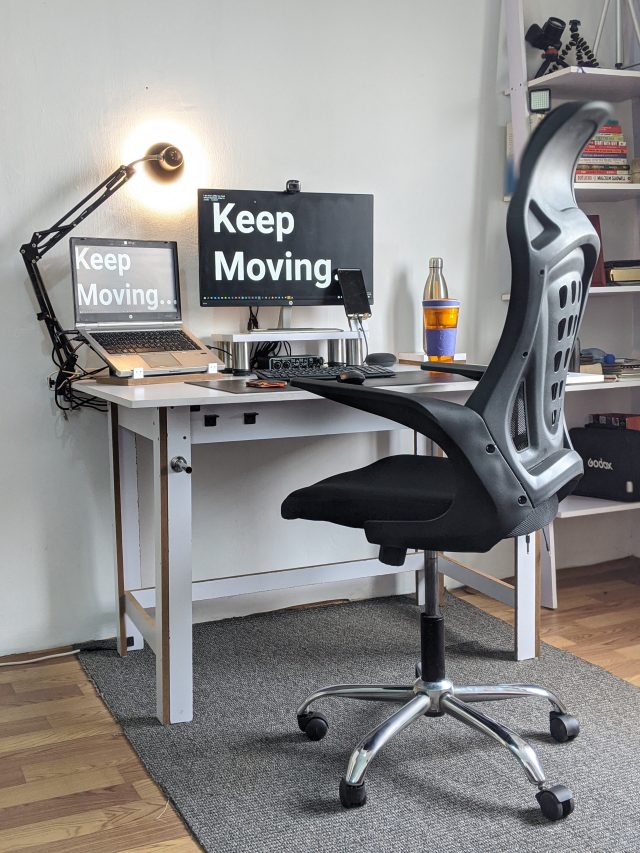Ergonomics is the science of designing and arranging a workplace to minimise the risk of injury and optimise productivity. In today’s modern age, more and more companies are turning to ergonomics to make their workplaces more efficient and comfortable. An ergonomically designed workspace can make a huge difference in the lives of employees, and in the success of a business.
Ergonomics focuses on the design of the physical environment and the relationship between people and technology. It also takes into account the physical, cognitive, and psychological aspects of the workplace. Proper ergonomics helps reduce the risk of musculoskeletal disorders (MSDs) such as carpal tunnel syndrome, back pain, and eye strain. It also helps to improve productivity, reduce fatigue, and improve morale. Ergonomics can involve making adjustments to an existing workspace, or designing an entirely new workspace.
Ergonomics is an important factor in workplace safety and productivity. It can help create a comfortable and productive workspace that can improve both employee morale and business success.
The most important factor in creating an ergonomic workspace is making sure employees are comfortable while they work.
1. Ergonomic furniture, such as adjustable chairs, desks, and computer monitors, can help reduce muscle strain and fatigue. By adjusting the height and angle of the chair, workstation, and computer monitor, employees can find the optimal positions that minimise strain and fatigue.
● Height adjustable electric standing desk: A height adjustable standing desk allows employees to transition from sitting to standing, reducing the risk of stiffness and fatigue.
● Ergonomically designed chairs: Ergonomically designed chairs provide support to the back and arms, helping reduce strain on the neck, shoulders, and back.
● Monitor arms: Monitor arms can be adjusted to the optimal viewing distance and angle, reducing strain on the eyes and neck.
● Ergonomic keyboards and mice: Ergonomic keyboards and mice are designed to reduce strain on the wrists, hands, and fingers.
● Footrests: Footrests can help reduce fatigue and discomfort by supporting the legs, reducing pressure on the lower back.
Ergonomic furniture has many benefits for employees, including improved posture, reduced strain and fatigue, and increased productivity. By creating a comfortable and ergonomic work environment, employees can be more productive and efficient, leading to increased business success.
2. Another key element of an ergonomic workspace is making sure the layout is conducive to productivity. A good layout should be tailored to the individual’s needs and preferences.
● If an employee works on a computer all day, it would be beneficial to have the monitor and keyboard placed at an optimal distance and angle that allows for good posture and efficient typing. In addition to ergonomic furniture, an ergonomic workspace should also include appropriate lighting, sound, and temperature. Proper lighting helps reduce eye strain, while the right sound and temperature can help reduce stress and improve overall productivity.
An ergonomic workspace can benefit employees in a number of ways. It can help to reduce physical strain and improve posture, leading to less fatigue and improved overall health. It can also help to reduce stress, which can lead to increased concentration, productivity, and creativity. Finally, an ergonomic workspace can help to create a more comfortable and pleasant working environment, leading to improved motivation and morale.
3. Finally, it is important to note that ergonomics is not a one-time fix; it requires regular maintenance and adjustments to ensure that it is still working effectively.
● Regular maintenance and adjustments to ergonomics can involve regularly assessing the workspace for comfort and efficiency and making adjustments as needed. This may include adjusting the height of your monitor, chair, and desk, introducing ergonomic furniture, and improving lighting and climate control. Additionally, it is important to periodically reassess the user’s needs and preferences in order to ensure that the ergonomics are still working effectively.
As technology and workflows evolve, it is important to update the workspace accordingly. Ergonomic workspace setup can significantly improve the efficiency, safety, and morale of any workplace. By creating an environment that is comfortable and conducive to productivity, companies can ensure that their employees are able to do their best work.
Ergonomically designed workspaces can be achieved by taking into account the size, shape, and posture of the user, as well as the tasks being performed.
Overall, it is important to create a workspace that is both comfortable and supportive of productivity. By taking into account the size, shape, and posture of the user, as well as the tasks being performed, companies can create a workspace that is tailored to the individual’s needs. Additionally, staying up-to-date with the latest technology can help to improve the user experience and increase productivity.













